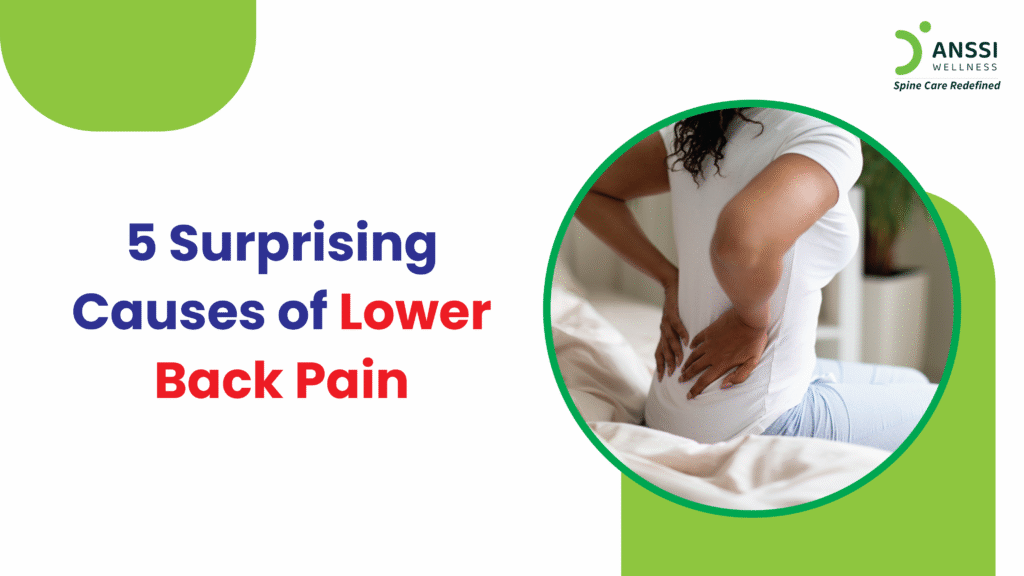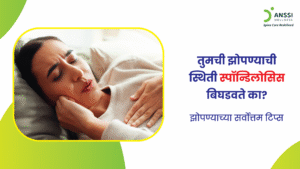When we think about lower back pain, we often blame injuries, bad posture, or lifting heavy objects. However, there are many surprising factors that could be silently contributing to that nagging discomfort.
From the food you eat to the shoes you wear, unexpected culprits might be affecting your spine health. Understanding these lesser-known causes can help you take proactive steps toward relief and prevention.
1. Poor Footwear Choices
Believe it or not, what you wear on your feet has a direct impact on your lower back.
High heels, unsupportive flats, or worn-out shoes can throw off your body’s alignment. When your feet lack proper support, your knees, hips, and spine adjust to compensate, leading to muscle strain in your lower back. Chronic pain may eventually arise from this imbalance.
Solution: To protect your back, choose footwear with good arch support, cushioning, and stability. If you spend long hours standing or walking, investing in quality shoes can make a big difference.
2. Sedentary Hobbies
Do you love binge-watching TV, gaming, or spending hours knitting? While these hobbies are relaxing, sitting for extended periods in the same position can harm your lower back.
Staying seated without breaks tightens the hip flexors and weakens core muscles, which are essential for supporting your spine. Poor posture, like slouching or leaning forward, further exacerbates the problem.
Solution: To reduce your risk, make it a habit to take short breaks every 30 minutes, stretch your muscles, and practise good posture while seated.
3. Certain Foods and Inflammation
What you eat may be affecting your back in ways you don’t realise.
Diets high in processed foods, refined sugar, and inflammatory oils can increase chronic inflammation in the body. Inflammation doesn’t just impact your digestive system or heart; it can also cause joint and muscle pain, including in the lower back.
Solution: Incorporating anti-inflammatory foods such as leafy greens, berries, fatty fish, nuts, and turmeric into your meals can help reduce inflammation and support musculoskeletal health. Staying hydrated and limiting processed foods can further protect your spine.
4. Carrying Heavy Bags
Do you carry a large purse or backpack on the same shoulder every day? This habit may be contributing to your back pain.
Unevenly loading the spine with a heavy bag on one side causes muscle imbalances and forces your spine to tilt unnaturally. Over time, this uneven pressure leads to strain and discomfort in the lower back.
Solution: Try switching sides regularly, using a cross-body bag, or opting for a backpack with two padded straps to evenly distribute weight and reduce the burden on your spine.
5. Stress and Emotional Tension
Lower back pain isn’t always purely physical. Emotional stress can manifest as muscle tension, leading to tightness and spasms in the lower back.
When we’re stressed, our bodies release cortisol and other stress hormones that increase muscle tension and inflammation. This response can exacerbate existing pain or even trigger new discomfort.
Solution: Incorporating stress-relief techniques such as yoga, meditation, deep breathing, or regular exercise can help manage emotional stress and reduce physical symptoms like back pain.
Finding Help at the Right Time
By identifying and addressing the above contributors, you can take meaningful steps toward reducing pain and improving your spine health. However, if the pain persists, consulting a healthcare professional can help you explore personalised solutions for lasting relief.
Lower back pain can be managed effectively with several non-surgical treatments.
- Physiotherapy, including targeted exercises and manual therapy, helps strengthen muscles, improve flexibility, and support spinal alignment. Heat and cold therapy can reduce inflammation and muscle spasms.
- Other options include massage therapy, acupuncture, and ergonomic modifications to improve posture and reduce strain.
- Non-surgical spinal decompression treatment gently relieves pressure on compressed discs and nerves, alleviating symptoms of nerve-related disorders.
Together, these approaches aim to relieve pain, improve mobility, and prevent further injury without surgery.
About ANSSI:
ANSSI Wellness focuses on improving the quality of life for patients suffering from spinal issues, aiming to provide relief where other conventional treatments have failed. Through advanced non-surgical spinal decompression treatment, ANSSI is committed to helping patients avoid surgery and recover in a safe, effective, and compassionate environment.
Connect with ANSSI Wellness on LinkedIn, Instagram, and Facebook for expert guidance.



